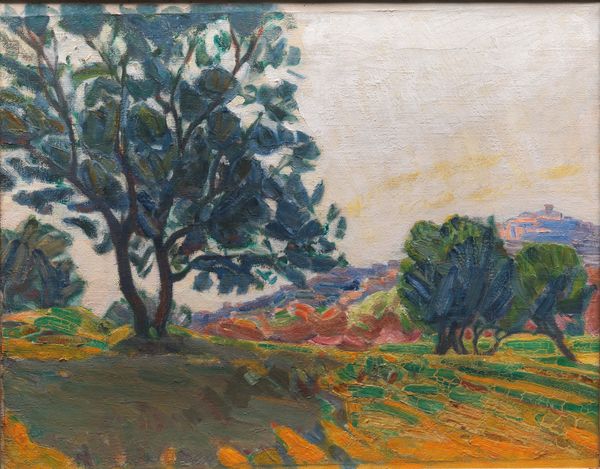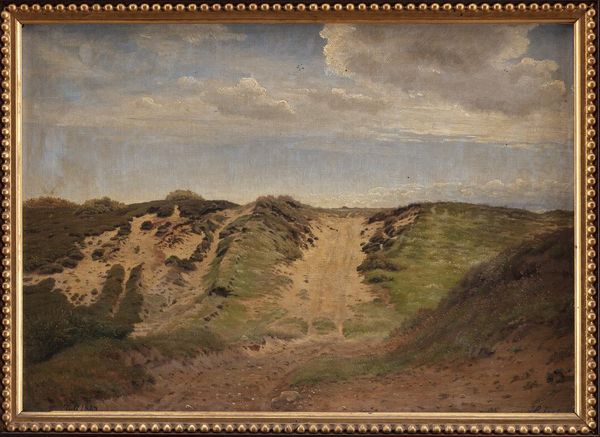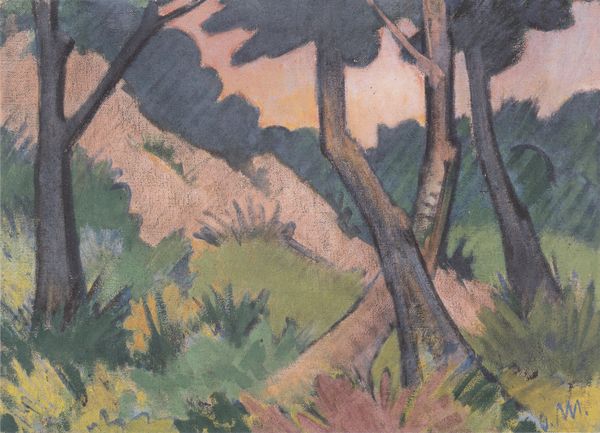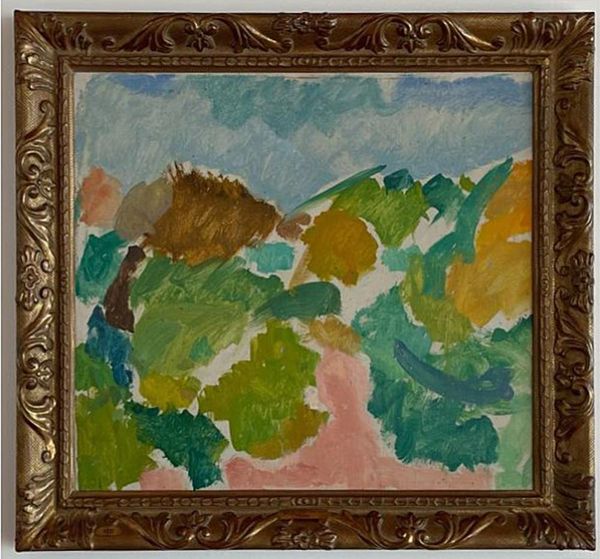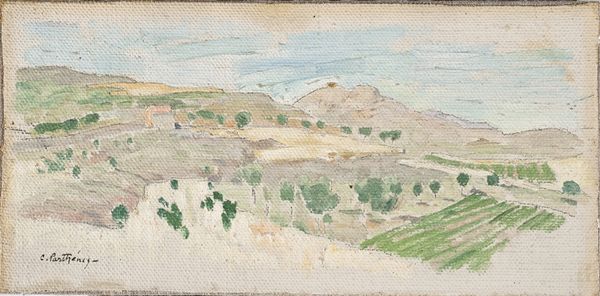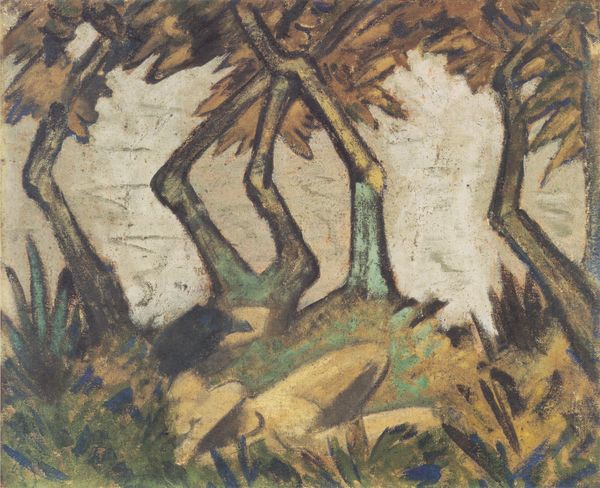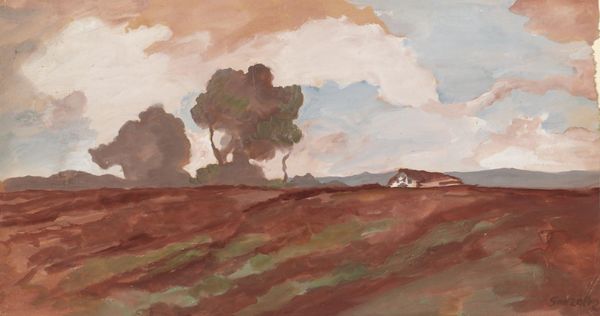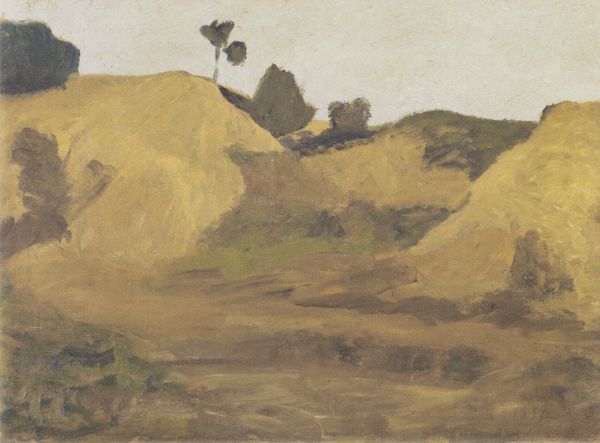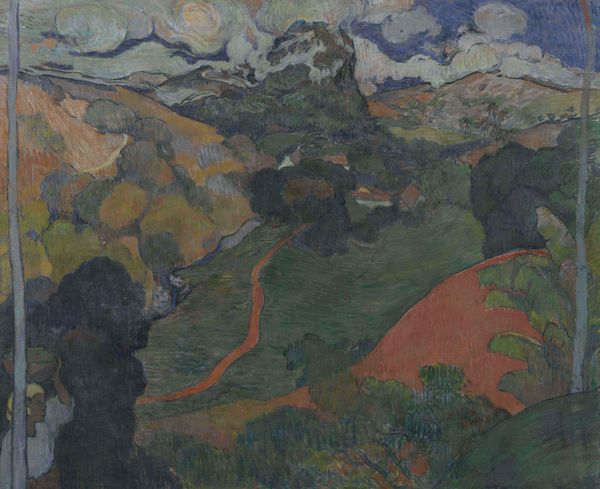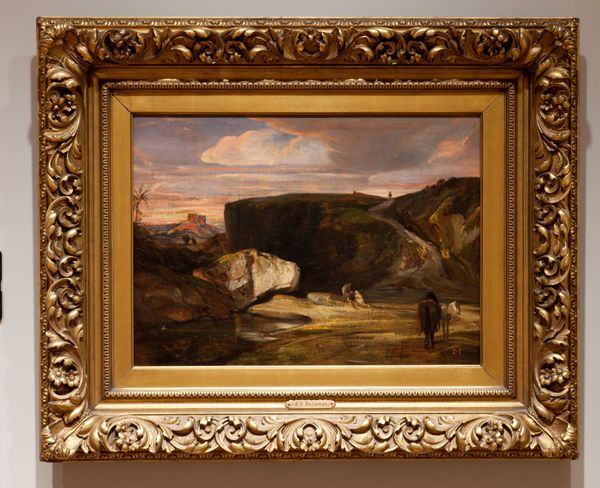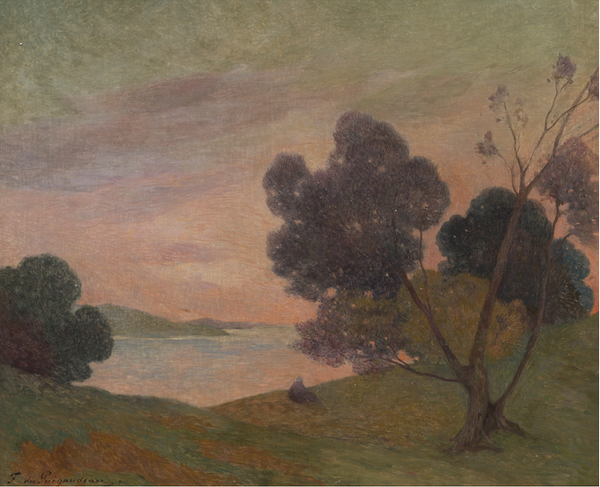
plein-air, oil-paint
#
plein-air
#
oil-paint
#
landscape
#
oil painting
#
naive art
#
post-impressionism
Dimensions: 44.7 mm (height) x 59.4 mm (width) (Netto), 64.6 mm (height) x 80.8 mm (width) x 5.5 mm (None) (Brutto)
Curator: Looking at this piece, I immediately think of a kind of solemn stillness. There is an almost austere, simplistic geometry, don't you think? Editor: Indeed. We’re standing before Mogens Ballin’s "Landscape, Brittany," created between 1891 and 1892. The medium is oil paint, very much en plein air. Ballin’s style positions him within the Post-Impressionist movement. Curator: Post-Impressionism is very apt. Notice the abstracted forms: the red hills segmented with violet-blue hues, the reductive presentation of the vegetation, and that almost imposing tree looming at the horizon. The composition is quite deliberately organized to elicit these impressions. Editor: For me, the landscape hints at the increasing industrialization of Brittany during that period. The muted palette, with its focus on earthy reds and somber greens, coupled with the implied human presence – that winding path – suggests the changing relationship of the worker to the land, to resources. Curator: But isn’t that winding path also working on our gaze? The lack of aerial perspective, coupled with its serpentine curve, invites us into the canvas. Look at the simplification of shapes! They almost verge on the symbolic, particularly that stoic tree that feels very personally placed. Editor: Perhaps, though I think Ballin's placement reveals an economic undercurrent, considering the harvesting of timber that defined the rural landscape back then. Was he really celebrating some stoic form or portraying his surroundings realistically with commentary on working communities of the time? The fact that Ballin favored these methods is intriguing; there are few overt brushstrokes or details of production. Curator: You’re drawn to a certain level of critical interpretation, understandably so. And while the oil paint and process undoubtedly contribute, let us not entirely obscure the pure visual sensation: the almost naïve perspective contributes to this odd balance. Editor: I suppose we each find in it reflections of what we look for. It remains, undeniably, evocative. Curator: Absolutely. It's certainly a work I keep coming back to and finding new nuance each time.
Comments
No comments
Be the first to comment and join the conversation on the ultimate creative platform.
